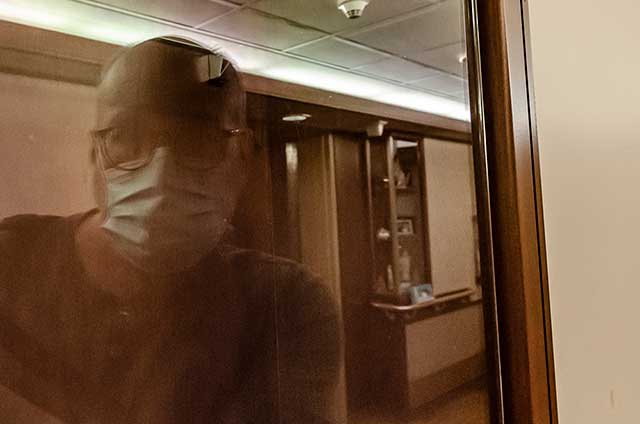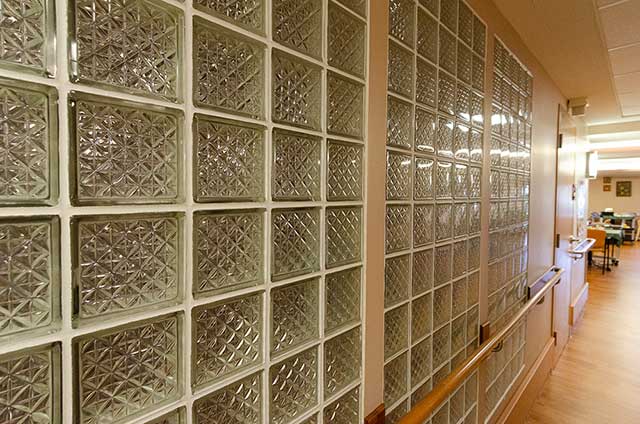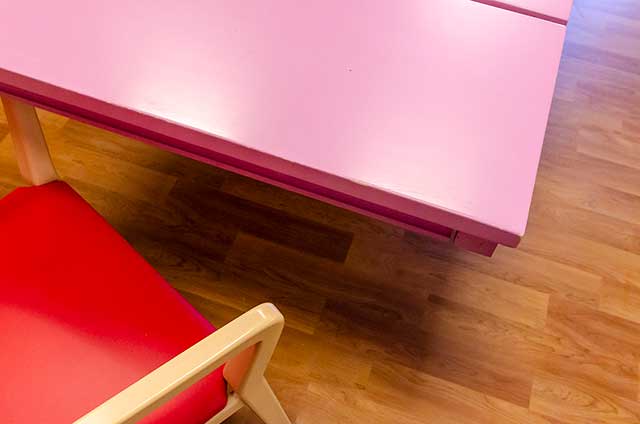Dangerous reflections
Reflective surfaces can be upsetting for people with dementia and can cause them to be fearful, anxious, or angry. Due to changes in the eye caused by dementia and aging, some people may misinterpret what they are seeing. Mirrors and windows can be challenging, but also shiny tables, countertops or other surfaces can be difficult.
The Butterfly Model limits these reflective surfaces or replaces them with graphics and finishes that help reduce residents’ confusion and stress.
Thomas would walk every evening, as he did in his life before dementia. Outside of his room was a large glass door which would be reflective of the interior space after dark. When Thomas reached the end of the hallway and saw his own reflection, he thought he was seeing his brother through the glass instead of himself. In his dementia Thomas often believed he was back in his childhood living with his brother Robert with whom he was very attached. Thomas would call to the reflection in the window and ask Robert to come in and spend time with him. When Robert didn’t come in, Thomas became sad and that sadness eventually turned to anger and frustration. In an attempt to prevent this disturbing experience, his family put an opaque film on the window that eliminated the reflection. Thomas’ distress ended instantly.
Being aware of these challenges and making small changes can make a huge difference in someone’s life.














